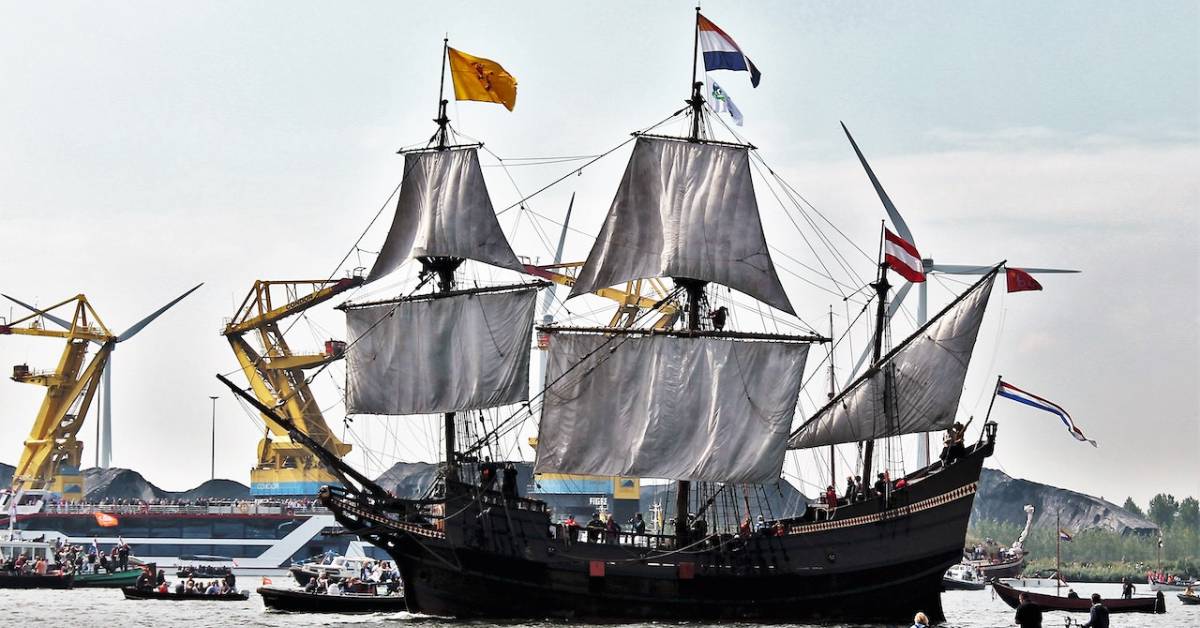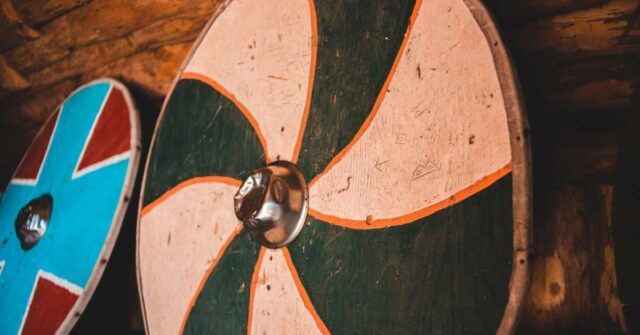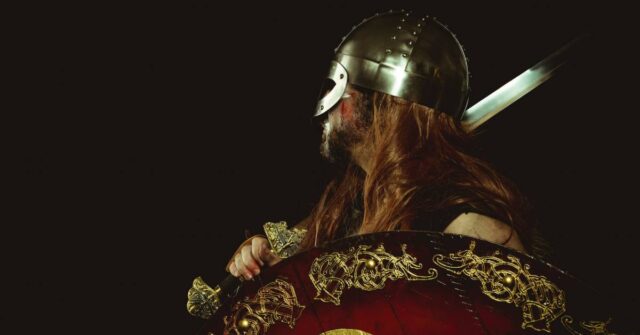In this article, we will guide you through the process of building a replica Viking longship for display or reenactment purposes.
From understanding longship design and construction to maintenance and preservation, we will cover all aspects of this fascinating project.
Introduction to Viking Longships
Viking longships were a symbol of power, craftsmanship, and maritime prowess in the Viking Age, spanning from the late 8th to the early 11th century.
These vessels played a crucial role in the Vikings’ exploration, trade, and warfare activities, allowing them to navigate vast distances and raid coastal settlements with speed and efficiency.
The Significance of Viking Longships in History
Viking longships hold great significance in history due to their influence on trade, culture, and warfare. They enabled the Vikings to explore and settle in new territories, such as Iceland, Greenland, and even North America.
Longships also represented the Vikings’ innovative shipbuilding techniques and artistry, which have inspired modern naval architecture and engineering.
Types of Viking Longships
There were several types of Viking longships, with variations in size, shape, and function. The most well-known types are the Drakkar, Karve, and Knarr.
Drakkar ships were often used for warfare and featured a dragon’s head at the prow, while Karve ships were smaller, more agile, and typically used for coastal navigation.
Knarr ships, on the other hand, were broader and more suitable for cargo transport and long-distance trade.
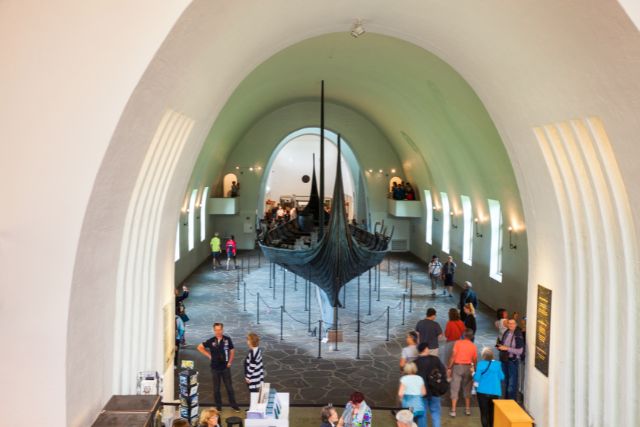
Understanding Longship Design and Construction
Before embarking on your replica Viking longship project, it’s essential to understand the design and construction elements that make these vessels unique. This knowledge will inform your decisions on materials, techniques, and overall design.
Materials Used in Viking Longships
Viking longships were primarily constructed from timber, with oak being the most commonly used wood. Other materials included iron for nails and rivets, as well as animal hides, wool, and linen for sails.
To seal the gaps between the wooden planks, Vikings used a combination of tar, moss, or animal hair to create a waterproof seal.
Anatomy of a Viking Longship
The anatomy of a Viking longship consisted of several key components, including the keel, stem and stern, hull, mast and rigging, sails, rudder, and oar-benches.
The long, slender shape of these ships, combined with their shallow draft, allowed them to sail quickly and navigate both open seas and shallow coastal waters.
Viking Longship Sailing Techniques
Viking longships were propelled by both sails and oars, with a single, square sail providing the primary means of propulsion.
In addition to their sailing skills, Vikings were adept at rowing, allowing them to maneuver their vessels with precision in challenging conditions or when sailing into the wind.
Planning Your Replica Viking Longship Project
Before you begin building your replica Viking longship, it’s essential to plan your project carefully. This involves establishing your goals, choosing the type and size of the longship, and considering legal and safety regulations.
Establishing Your Goals
First, determine your primary purpose for building a replica Viking longship. Are you creating the longship for display in a museum or historical site, or do you plan to use it for reenactments and sailing events?
Establishing your goals will help you make informed decisions about the design, materials, and construction techniques to be used throughout the project.
Choosing the Type and Size of Longship
Next, decide on the type and size of the longship you wish to build. Consider factors such as historical accuracy, available space for display or storage, and the intended use of the vessel.
The size of your longship will also affect the complexity of the project and the amount of time and resources required for completion.
Considering Legal and Safety Regulations
Before starting your project, research and familiarize yourself with any legal and safety regulations related to building and operating a replica Viking longship.
This may include permits for construction, regulations for transporting the vessel, and guidelines for participating in reenactments or sailing events. Adhering to these regulations will ensure the safety of everyone involved and protect your investment.
Blueprints and Design Plans
Creating accurate blueprints and design plans is crucial for building a historically accurate and functional replica Viking longship. This involves studying historical sources, utilizing modern design software, and consulting experts in the field.
Studying Historical Sources and Records
Begin by researching historical sources, such as archaeological findings, preserved longships, and written records.
These sources will provide valuable insights into the design and construction methods used by the Vikings, helping you create an authentic replica.
Utilizing Modern Design Software
Modern design software can help you create detailed and accurate blueprints for your Viking longship.
Programs such as CAD (Computer-Aided Design) software allow you to develop precise schematics, which can be invaluable during the construction process.
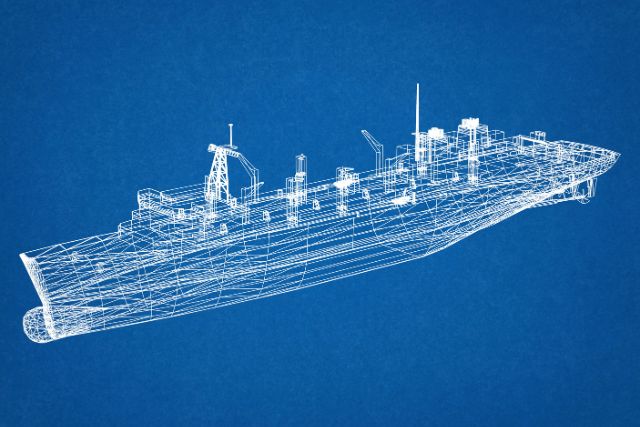
Consulting Experts and Specialists
Consider consulting with experts and specialists in Viking history, maritime archaeology, and shipbuilding. Their knowledge and experience can provide invaluable guidance as you create your design plans and embark on your longship project.
Gathering Materials and Tools
Once you have developed a comprehensive design plan, the next step is to gather the necessary materials and tools for building your replica Viking longship.
Traditional Materials and Techniques
If you aim to create a historically accurate replica, you’ll need to source traditional materials such as oak timber, iron nails, and natural fibre sails.
Additionally, you may want to employ traditional construction techniques, such as clinker-built hulls and hand-forged ironwork.
Modern Materials and Techniques
For those prioritizing functionality and ease of construction, modern materials and techniques may be more suitable. This could include using plywood or composite materials for the hull, as well as synthetic fabrics for sails.
Keep in mind that utilizing modern materials may affect the historical accuracy of your replica.
Tools and Equipment Required
Ensure you have the necessary tools and equipment to build your longship. This may include woodworking tools, such as saws, chisels, and planes, as well as metalworking tools for forging iron components.
Additionally, you may need specialized equipment for hoisting and maneuvering large timbers during construction.
Building the Replica Viking Long Ship
With your design plans, materials, and tools in hand, you are now ready to begin the construction of your replica Viking longship. This process involves several stages, each requiring attention to detail and craftsmanship.
Assembling the Keel, Stem, and Stern
Start by assembling the keel, stem, and stern of your longship. These components form the backbone of the vessel and provide the structure upon which the hull planks will be attached.
Carefully shape and join these pieces, ensuring they are strong and correctly aligned.
Constructing the Hull
Next, construct the hull using the clinker-built technique, in which overlapping planks are fastened together with iron nails and rivets. This method creates a strong, watertight hull that is also lightweight and flexible.
Ensure that the planks are carefully shaped and fitted to maintain the vessel’s structural integrity and achieve an authentic appearance.
Installing the Deck and Oar Benches
Once the hull is complete, install the deck and oar benches. The deck provides a working surface for the crew, while the oar benches serve as seating for the rowers.
These components should be sturdy and securely fastened to the hull to ensure the vessel’s functionality and safety.
Building the Mast and Rigging
Construct the mast and rigging system for your longship. The mast should be tall and strong enough to support the sail, while the rigging must be carefully designed to allow for efficient sail handling and maneuverability.
Familiarize yourself with Viking rigging techniques to ensure an authentic and functional setup.
Creating the Sails and Rudder
Next, create the sails and rudder for your longship. The sails can be made from natural fibres such as wool or linen, or from modern synthetic materials, depending on your preference.
The rudder should be designed to provide effective steering and be securely attached to the stern of the vessel.
Applying Finishing Touches and Decorative Elements
Finally, apply any finishing touches and decorative elements to your replica Viking longship.
This may include carving intricate designs into the woodwork, painting the hull, or adding a dragon’s head to the prow, depending on the type of longship you are building.
These details can greatly enhance the overall appearance and historical accuracy of your vessel.
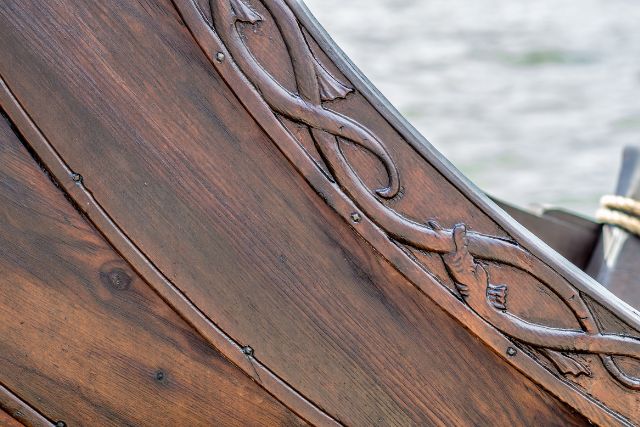
Launching and Testing the Replica Viking Longship
With your replica Viking longship complete, it’s time to launch and test the vessel to ensure it is seaworthy and performs as intended.
Preparing for Launch
Before launching your longship, make any necessary preparations, such as ensuring the vessel is watertight, rigging the sails, and securing all loose items.
Additionally, familiarize yourself with any safety guidelines or launch procedures specific to your location.
Conducting Initial Sea Trials
Once your longship is in the water, conduct initial sea trials to test its performance and handling characteristics. This may include testing the vessel’s stability, maneuverability, and speed under both sail and oar power.
Take note of any issues or areas for improvement during these trials.
Addressing Issues and Making Adjustments
After the initial sea trials, address any issues or make adjustments as needed to improve the vessel’s performance and safety. This may involve modifying the rigging, adjusting the rudder, or making repairs to the hull or other components.
It’s important to ensure that your replica Viking longship is both functional and safe before participating in any reenactments or sailing events.
Displaying or Reenacting with Your Replica Viking Longship
With your replica Viking longship complete and tested, you can now use it for display or reenactment purposes. Proper planning and preparation will ensure a successful and enjoyable experience.
Display Considerations
If you plan to display your longship, consider factors such as location, accessibility, and protection from the elements. Ensure that the vessel is securely and appropriately displayed to prevent damage and ensure the safety of visitors.
Additionally, consider creating informative signage or materials to educate visitors about the history and significance of Viking longships.
Participating in Reenactments
For those interested in using their replica Viking longship in reenactments, research and connect with local reenactment groups or organizations.
These groups can provide valuable guidance on participating in events, as well as help you develop your skills in sailing and rowing a Viking longship. Ensure that you are familiar with any safety guidelines or regulations related to reenactment events.
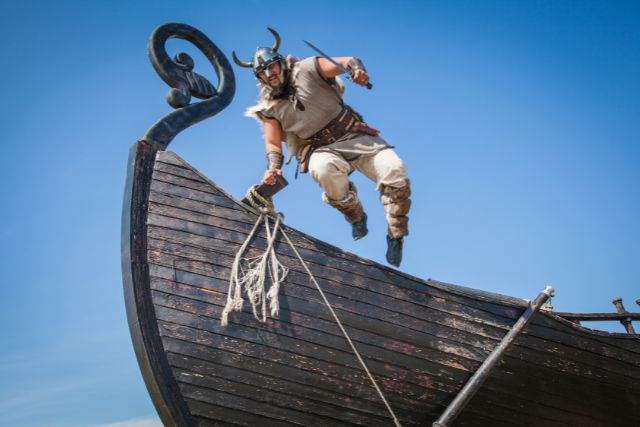
Transportation and Storage of Your Longship
Consider the logistics of transporting and storing your replica Viking longship. Depending on the size and type of longship, you may require specialized transportation equipment or storage facilities.
Plan for these requirements in advance to ensure the safety and preservation of your vessel.
Maintenance and Preservation
Proper maintenance and preservation are essential for ensuring the longevity and continued enjoyment of your replica Viking longship. Regular inspections, repairs, and preservation techniques will help protect your vessel from damage and deterioration.
Regular Maintenance and Inspection
Conduct regular maintenance and inspections of your longship to identify and address any issues or potential problems.
This may include checking the hull for damage or leaks, inspecting the rigging and sails for wear, and ensuring all moving parts are in good working order. Regular maintenance will help prevent costly repairs and ensure the safety of the vessel.
Preservation Techniques for Longevity
Employ preservation techniques to protect your replica Viking longship from damage and prolong its lifespan.
This may involve applying protective coatings to the wood, storing the vessel in a climate-controlled environment, or using UV-resistant materials for sails and other components.
Research and utilize appropriate preservation methods for the materials and techniques used in your longship’s construction.
Repairs and Restoration
In the event of damage or deterioration, conduct repairs or restoration work as needed to maintain the integrity and appearance of your replica Viking longship.
Consult with experts or specialists, if necessary, to ensure that repairs are carried out in a historically accurate and structurally sound manner.
Conclusion
Building a replica Viking longship for display or reenactment is a rewarding and educational endeavour that allows you to explore the history and craftsmanship of these iconic vessels.
By following the steps outlined in this article, you can create an authentic and functional longship that showcases the innovation and maritime prowess of the Vikings.
With proper planning, construction, and maintenance, your replica Viking longship will serve as a lasting testament to the rich cultural heritage and seafaring skills of the Viking people.

Whether you use it for educational purposes, historical reenactments, or simply as a stunning display piece, your replica longship will undoubtedly inspire awe and admiration from all who encounter it.
Embrace the challenge and immerse yourself in the world of Viking shipbuilding, and you will be rewarded with an unforgettable experience and a remarkable piece of history to share with others.

